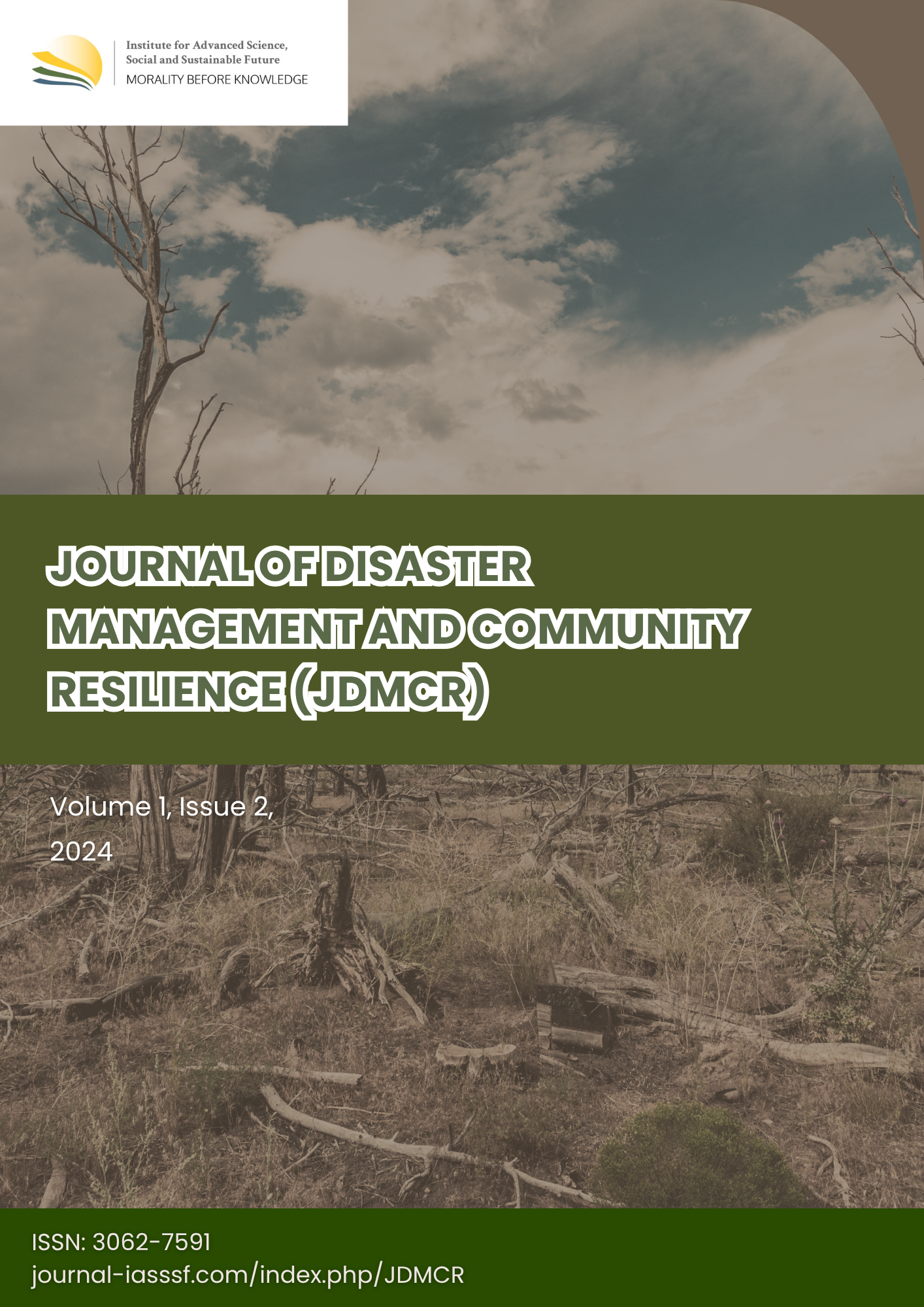Current status and challenges of disaster response and rehabilitation measures for vulnerable populations in Kagoshima Prefecture, Japan: A cross-sectional study
DOI:
https://doi.org/10.61511/jdmcr.v1i2.1224Keywords:
disaster preparedness, disaster rehabilitation, emergency evacuation, evacuation support, local government, vulnerable populationsAbstract
Background: Kagoshima Prefecture, Japan, is highly vulnerable to natural disasters, requiring effective disaster response and rehabilitation for vulnerable populations. This study investigated the preparedness of municipalities in Kagoshima for post-disaster rehabilitation, focusing on current relief activities, municipal awareness, and the readiness of administrative personnel and healthcare professionals. Methods: A cross-sectional survey was conducted from January to March 2023, targeting officers in disaster countermeasures-related municipal departments. The survey assessed awareness of vulnerable populations, understanding of support needs, and the status of support systems during evacuations. Finding: 51.2% of municipalities responded; 86.4% were aware of vulnerable populations, but only 54.5% had a clear understanding of their needs. A small proportion (18.2%–36.4%) had comprehensive support systems during evacuations. Only 4.5% were familiar with disaster rehabilitation, but 63.6% were interested in discussing plans with medical professionals. Conclusion: The findings reveal gaps in municipalities’ awareness and preparedness for disaster rehabilitation of vulnerable populations, highlighting the need for more training, resources, and collaboration between local governments and healthcare professionals. Novelty/Originality of this article: This study is the first to thoroughly examine disaster rehabilitation at the municipal level in Kagoshima Prefecture. By identifying gaps in municipal awareness and preparedness, it contributes to the development of more effective disaster rehabilitation strategies, enhancing community resilience.
References
Amatya, B., Lee, S. Y., Galea, M. P., & Khan, F. (2020). Disaster Rehabilitation Response Plan: Now or Never. American Journal of Physical Medicine & Rehabilitation / Association of Academic Physiatrists, 99(2), 170–177. https://doi.org/10.1097/PHM.0000000000001308.
Cabinet Office, Government of Japan. (2016). Summary of damage situation in the Kumamoto Earthquake. Retrived from https://www.bousai.go.jp/updates/h280414jishin/pdf/h280414jishin_39.pdf.
Cordero-Reyes, A. M., Palacios, I., Ramia, D., West, R., Valencia, M., Ramia, N., Egas, D., Rodas, P., Bahamonde, M., & Grunauer, M. (2017). Natural disaster management: experience of an academic institution after a 7.8 magnitude earthquake in Ecuador. Public Health, 144, 134–141. https://doi.org/10.1016/j.puhe.2016.12.003.
Deguchi, K. (1991). Development of a ventilation system against volcanic ash fall in Kagoshima. Energy and Buildings, 16(1), 663–671. https://doi.org/10.1016/0378-7788(91)90035-2.
Gomez, C. (2014). Digital photogrammetry and GIS-based analysis of the bio-geomorphological evolution of Sakurajima Volcano, diachronic analysis from 1947 to 2006. Journal of Volcanology and Geothermal Research, 280, 1–13. https://doi.org/10.1016/j.jvolgeores.2014.04.015.
Japan Meteorological Agency. (2013). Volcanic activity of Sakurajima Volcano - September 2013. Retrived from https://www.data.jma.go.jp/svd/vois/data/tokyo/STOCK/monthly_v-act_doc/fukuoka/13m09/506_13m09.pdf.
Kumar, S. & Havey, T. (2013). Before and after disaster strikes: A relief supply chain decision support framework. International Journal of Production Economics, 145(2), 613–629. https://doi.org/10.1016/j.ijpe.2013.05.016.
QGIS. (n.d.). Retrieved March 12, 2024, from https://www.qgis.org/en/site/.
Rathore, F. A., Gosney, J. E., Reinhardt, J. D., Haig, A. J., Li, J., & DeLisa, J. A. (2012). Medical rehabilitation after natural disasters: why, when, and how? Archives of Physical Medicine and Rehabilitation, 93(10), 1875–1881. https://doi.org/10.1016/j.apmr.2012.05.018.
Reinhardt, J. D., Li, J., Gosney, J., Rathore, F. A., Haig, A. J., Marx, M., DeLisa, J. A., & International Society of Physical and Rehabilitation Medicine’s Sub-Committee on Rehabilitation Disaster Relief. (2011). Disability and health-related rehabilitation in international disaster relief. Global Health Action, 4, 7191. https://doi.org/10.3402/gha.v4i0.7191.
World Health Organization. (2017, January 12). WHO’s Six-Year Strategic Plan to Minimize the Health Impact of Emergencies and Disasters: 2014-2019. Social Science in Humanitarian Action Platform. https://www.socialscienceinaction.org/resources/whos-six-year-strategic-plan-to-minimize-the-health-impact-of-emergencies-and-disasters-2014-2019/.
Downloads
Published
Issue
Section
Citation Check
License
Copyright (c) 2024 Fumiyo Matsuda, Takumi Yamaguchi, Nobuhiko Yanagida, Yuko Matsunari

This work is licensed under a Creative Commons Attribution 4.0 International License.














